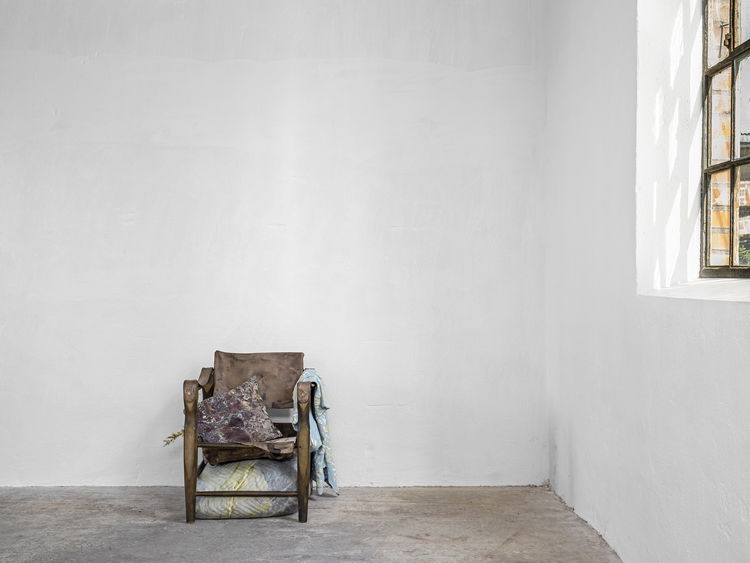Tatiana Trouvé

In her large-scale drawings, cast and carved sculptures, and site-specific installations, Tatiana Trouvé assesses the relationship between memory and material, pitting the ceaseless flow of time against the remarkable endurance of common objects. By pushing the very definitions of “copy,” “echo,” and “image,” she invents, even inhabits, environments that straddle studio, street, landscape, and dream.
I’m rather fond of the idea that things appear from the moment they are deformed, in the play between what is identical and different, between repetition, alteration, and renewal—like the movement my voice makes in its journey in front of the mountain’s belly, which allows me to measure the architecture of the mountain.
Tatiana Trouvé
Trouvé was born in Cosenza, Italy, and spent her childhood and early teenage years in Dakar. After graduating from the Villa Arson, Nice, France, in 1989, she moved to the Netherlands to the Ateliers 63 in Haarlem for two years. In 1994, she moved to Paris, eventually establishing her studio in Montreuil, a historically industrial suburb on the eastern periphery of the city.
In 1997, while searching for a job, she began the project Bureau d’activités implicites (Bureau of Implicit Activities) (1997–2007), in which she displayed her personal documents in architectural “modules,” interspersing them with invented résumés and other fictionalized papers. This experiment in crafting and comprehending identity through a bureaucratic lens, a foundation for Trouvé’s archival impulse, allowed her to accumulate a vast collection of images and small objects that are referenced in her drawings and sculptures.
In the sculptural series Polders (2000–), Trouvé scales up objects and interiors, yet often implements windows or mirrors that prevent the viewer from getting physically into the spaces. Thus, while accumulated documents reveal the fictions of identity formation in Bureau d’activités implicites, in Polders, physical limitations alienate the mind and body from seemingly familiar interiors.
Trouvé’s drawings have always been deeply intertwined with her sculptural work. Often, she projects visual fragments from the studio or from her personal archive of found and original images onto the picture plane, capturing them there in graphite to create richly detailed two-dimensional realms. In the series Intranquillity (2005–), whose title refers to Fernando Pessoa’s 1982 Book of Disquiet (Intranquillité in the French translation), Trouvé experiments with different modes of spatiotemporal shifting. The works comprising the series Remanence (Afterglow) (2008–), drawn in black graphite on black paper, reveal the surprises and the inconsistencies of memory, considering the liminal space between waking and dreaming. A similar relationship exists between the series Les dessouvenus (The unremembered) (2013–) and The Great Atlas of Disorientation (2019–). To make the former, Trouvé plunges large sheets of colored paper into bleach, allowing the boundaries of each stain to provide a loose structure for complex “environmental dramas” that she then draws in pencil. To create the latter, she uses watercolor, ink, or linseed oil to defamiliarize the compositional structures of Les dessouvenus.
Trouvé was awarded the Prix Marcel Duchamp in 2007, which led to 4 between 3 and 2, a 2008 solo exhibition at Centre Pompidou, Paris, featuring drawings, cast-bronze sculptures, and architectural barriers made of metal bars and glass. In 2010, the Kunsthaus Graz, Austria, presented Il grande ritratto (Larger than Life), a monumental installation wherein Trouvé transformed the museum’s lower level into a postapocalyptic landscape echoing the 1960 science-fiction novel of the same title by Italian writer Dino Buzzati. That same year, the survey Tatiana Trouvé: The Longest Echo / L’écho le plus long opened at the Musée d’art moderne et contemporain, Geneva. The structure of many of Trouvé’s exhibitions is echoed in the ongoing series Les indéfinis (The undefined) (2014–), which combines and reactivates works that were initially intended for past series but ended up taking on separate lives of their own. Common objects—tires, folded cardboard, macramé hangings—are cast in bronze or copper and paired with vitrines of gleaming greenish Plexiglas. As their collective title suggests, Les indéfinis resist definition, existing between the categories of Trouvé’s practice.
In 2015, the Public Art Fund commissioned Trouvé to create Desire Lines, an outdoor installation in New York’s Central Park consisting of oversize spools of rope whose respective lengths correspond with those of more than two hundred distinct pathways in the park. This tactile approach to cartography, suggesting that maps emerge from and alter bodily experience, appears in various iterations in Trouvé’s work.
More than orientation, however, Trouvé reveals the infinite potentialities of disorientation, encouraging viewers to wander, even to get lost. She continues to merge interior and exterior worlds, more explicitly taking on ecological questions by considering the ways in which public and private space, built and destroyed environments, converge.

